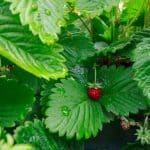From time immemorial, indigenous peoples have been the gatekeepers of the earth’s ecological knowledge. They have lived in harmony with the land, understanding its ebbs and flows, its seasons, and its complex network of life. This rich body of knowledge, accumulated over countless generations, is not stored in books or on servers. Instead, it is passed down orally from one generation to the next. This article explores the crucial role of indigenous storytelling in preserving and transmitting this valuable knowledge.
The Tradition of Indigenous Storytelling
Narrating tales under the starlit sky or around the warmth of a campfire is an age-old practice in many indigenous communities. Storytelling serves multiple purposes ranging from entertainment to education, and maintaining cultural continuity.
Lire également : Discover monaco's luxury with homes real estate experts
Indigenous storytelling is an oral tradition, treasured as a significant cultural practice. The stories are often interwoven with teachings about the land, the community and its history, imparting essential values and norms to the listeners. These stories are not mere figments of imagination, but repositories of ancestral wisdom and collective memory of the community.
The narrations reflect the intimate connection between the indigenous peoples and their environment, highlighting their understanding of the natural world. They typically incorporate elements of the local biodiversity, the changing seasons, and the ways of life of the community.
A lire également : How does sustainable agriculture address land degradation and desertification challenges?
The Ecological Wisdom Encoded in Stories
The essence of indigenous storytelling lies in its ability to encapsulate complex ecological knowledge in simple and engaging narratives. These stories often encode information about the local flora and fauna, the ecosystem dynamics, and the sustainable practices of the community.
For instance, in the Arctic, the Inuit community’s tales often feature animals like the polar bear and the walrus, teaching children about their behaviors, habitats, and hunting practices. Similarly, the Maori of New Zealand have stories about land and sea, reflecting their deep understanding of their environment.
The descriptions of landscapes, animals, plants, and weather patterns in these stories provide valuable insights into the local ecology. Through storytelling, indigenous communities have managed to pass down an astonishingly detailed and accurate body of ecological knowledge from generation to generation.
Storytelling as a Mode of Indigenous Education
In most indigenous communities, storytelling is a primary mode of education. Children learn about their environment, their community’s customs, and the wisdom of their ancestors through stories. It is an interactive and engaging pedagogical tool that encourages active listening and learning.
Universities and educational institutions across the globe are now recognizing the value of the indigenous storytelling approach. They are working towards integrating this traditional pedagogical tool into their curriculums, acknowledging the value of indigenous knowledge and wisdom.
The University of British Columbia, for example, has developed a program called ‘Indigenous Storytelling and Education’, which aims to “bring together indigenous knowledge bearers, educators, learners, and researchers to explore, document, and facilitate the sharing of indigenous knowledge”. This initiative highlights the growing recognition of indigenous storytelling as a powerful educational tool.
Indigenous Storytelling and Cultural Preservation
Storytelling plays a pivotal role in preserving the unique cultural identities of indigenous communities. The stories often contain elements of their language, traditional practices, and shared history. By passing these stories down, communities ensure the survival of their distinct cultural and linguistic heritage.
Preserving cultural heritage is not just about holding on to the past. It also plays a role in building resilience and adaptation. The stories often contain knowledge about how to deal with disasters, how to conserve resources, and how to coexist with other species. This wisdom can help communities, and indeed the whole of humanity, to navigate the challenges posed by climate change and environmental degradation.
The Pressing Need to Document Indigenous Stories
Given the richness and vitality of the knowledge contained in indigenous stories, there is a pressing need to document them. Many indigenous languages are endangered, and with their loss, we risk losing the valuable ecological knowledge they carry.
Documenting these stories is not just about recording them verbatim. It is about understanding the context in which they are told, the cultural nuances they contain, and the knowledge they encode. It is a complex task that requires collaboration between indigenous communities, linguists, environmental scientists, and anthropologists.
The Native American Oral History Project at the University of Arizona and the Indigenous Storytelling and Law Project at the University of Colorado are examples of such collaborative efforts. These projects aim to document and analyze indigenous stories, recognizing their value as a source of knowledge and a means of cultural preservation.
In conclusion, indigenous storytelling is not just the narration of tales. It is a powerful tool for ecological education, cultural preservation, and community building. It is a way of seeing the world and relating to it, a reflection of the indigenous peoples’ deep respect for the land and the life it sustains.
Google Scholar and Research Into Indigenous Storytelling
Google Scholar and other academic databases have become integral platforms for research into indigenous storytelling and its role in passing down traditional ecological knowledge. These resources have given researchers, students, and the general public access to a wealth of information about indigenous cultures and their oral traditions.
Indigenous knowledge systems, as conveyed through storytelling, have been the subject of many scholarly articles and books. For example, researchers like Fernandez Llamazares have extensively explored the rich tapestry of indigenous ecological knowledge and its potential contributions to contemporary environmental science. These works argue that indigenous storytelling, as a form of oral history, offers profound insights into sustainable living and conservation practices.
Using Google Scholar, one can find numerous studies centered on specific indigenous communities, examining the ecological wisdom embedded in their oral traditions. For example, there’s ample research on the American Indian storytelling traditions, detailing their intricate relationship with the natural world. Similar studies have been conducted on the indigenous peoples of North America, Africa, Asia, and Australia, among other regions.
These research projects highlight the need to respect and preserve indigenous cultures and their traditional knowledge systems. The detailed exploration of indigenous storytelling on platforms like Google Scholar underlines the importance of these narratives in the global dialogue on climate change and biodiversity conservation.
Collaborative Efforts to Preserve Indigenous Storytelling
The task of preserving and understanding indigenous storytelling is complex, requiring collaborative efforts among various stakeholders. Indigenous communities must be at the forefront, guiding the process to ensure the accurate representation and respectful treatment of their cultural heritage.
Several universities and institutions have already initiated such collaborative efforts. For instance, the University of British Columbia has been working with indigenous communities to integrate their oral histories into educational curriculums. Similarly, in the United States, tribal communities are partnering with universities to document their stories and traditions.
The Native American Oral History Project at the University of Arizona and the Indigenous Storytelling and Law Project at the University of Colorado are notable examples. These initiatives aim to document indigenous stories, highlighting their value as a source of knowledge, a means of cultural preservation, and a tool for community building.
Conclusion: The Power of Indigenous Storytelling
In a rapidly changing world, the indigenous storytelling tradition offers a valuable lens to view and understand the natural environment. This oral tradition presents an alternative, sustainable way of living that is deeply connected to the land and its ecological processes.
Preserving indigenous storytelling is not just about safeguarding cultural heritage. It’s about recognizing and respecting the wisdom of indigenous peoples, who have lived in harmony with nature for thousands of years. It’s about learning from their experiences, their values, and their vision of a sustainable future.
Indigenous stories, with their rich depictions of landscapes, weather patterns, flora and fauna, serve as a crucial reservoir of ecological knowledge. They have the potential to inform and guide our strategies for conservation and climate change adaptation.
Therefore, the role of indigenous storytelling in passing down traditional ecological knowledge cannot be overemphasized. As we face increasing environmental challenges, the stories of indigenous people hold profound lessons for humanity. These narratives remind us of our deep interconnection with nature and inspire us to live more harmoniously with our environment.











